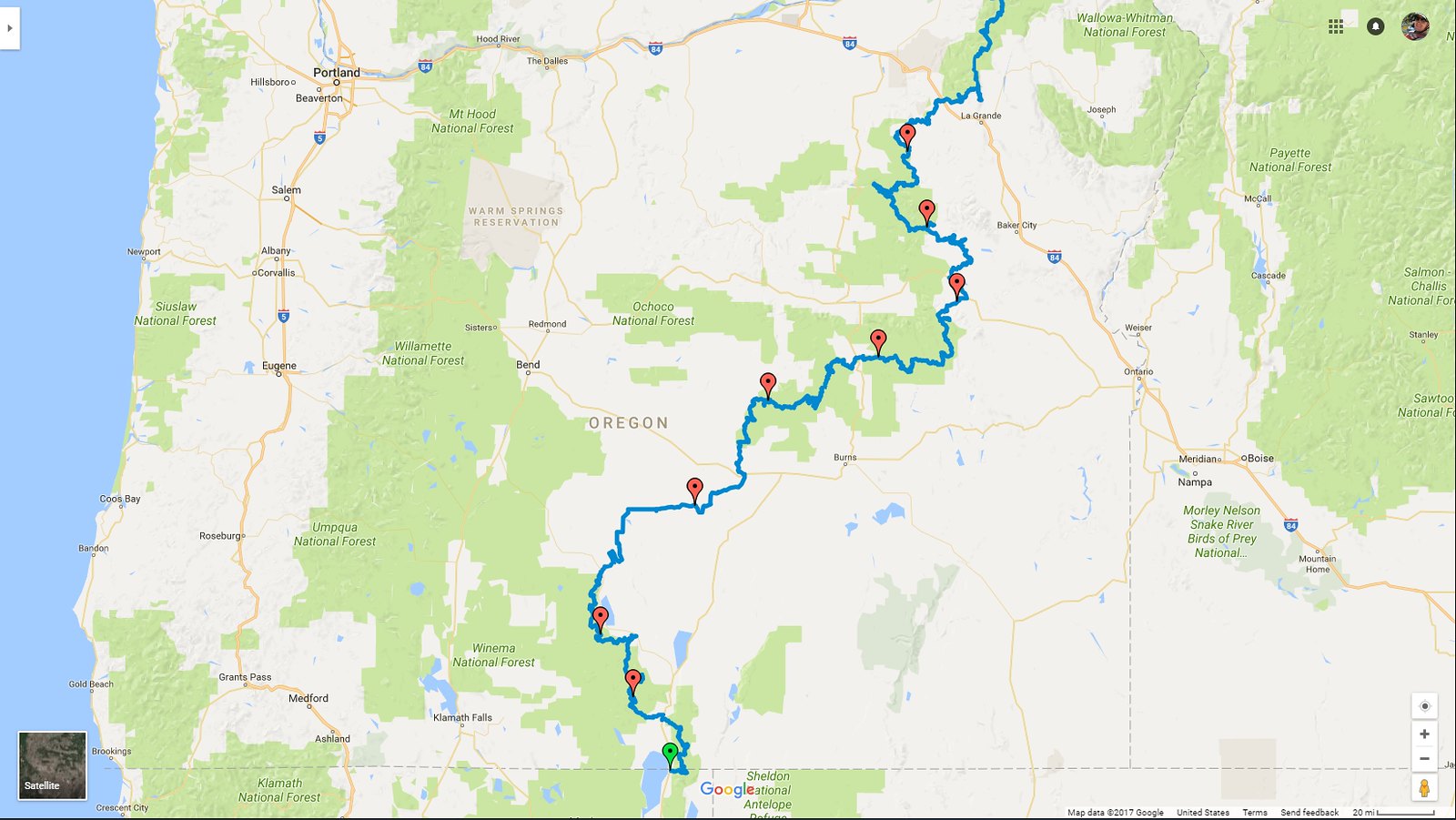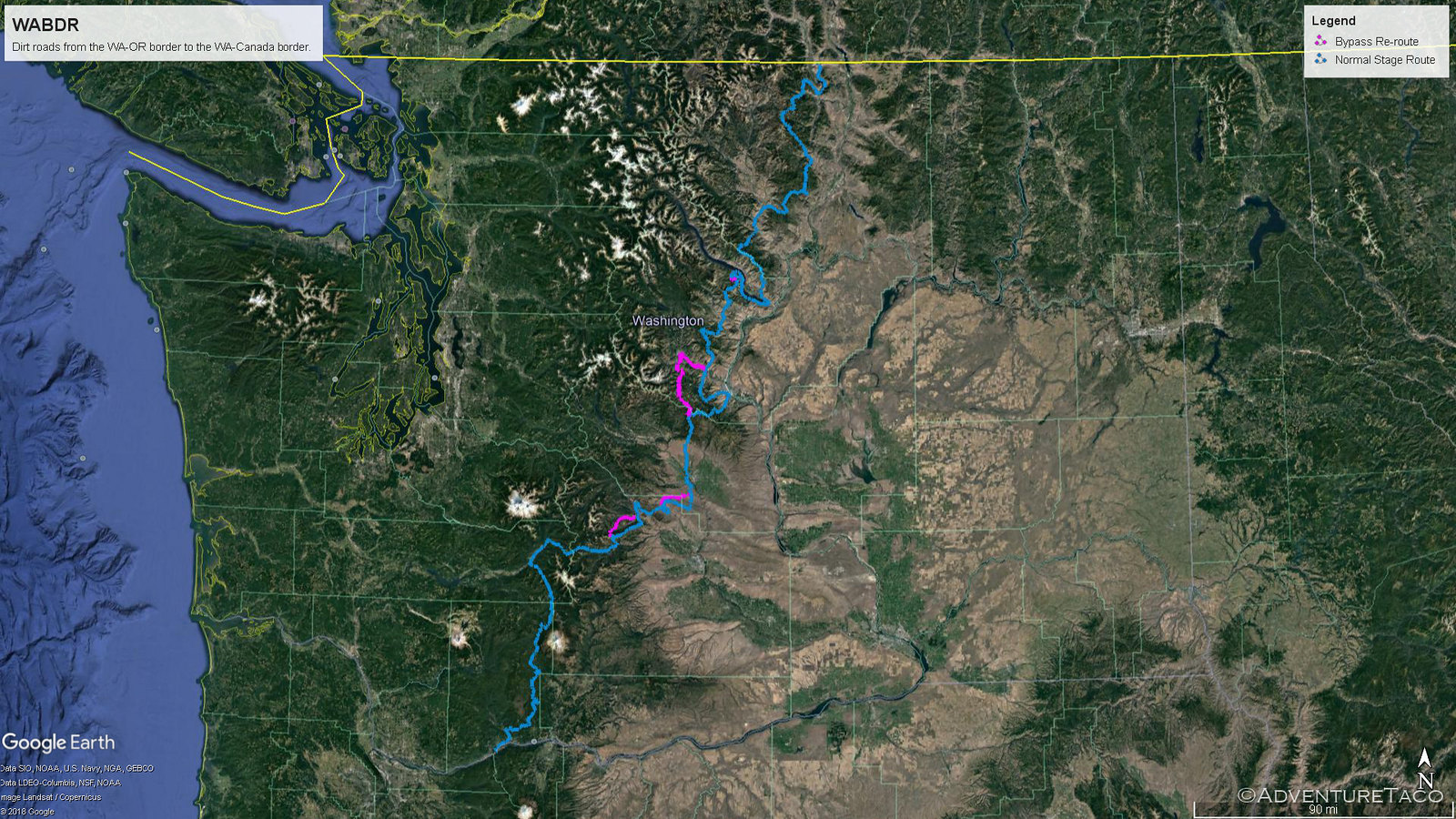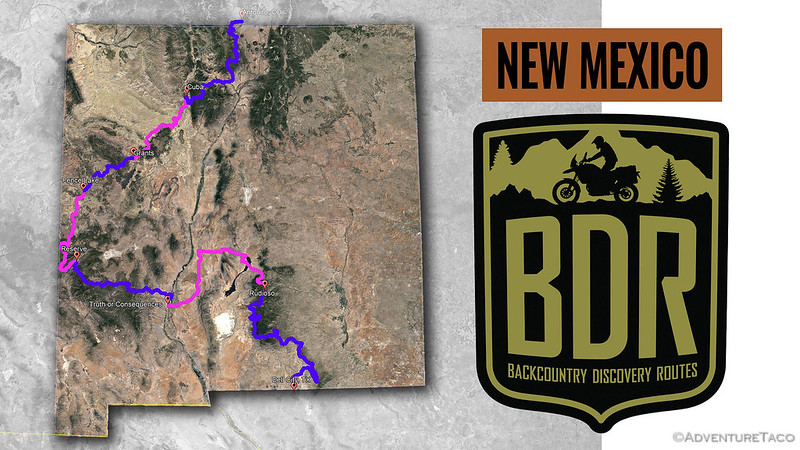The Arizona Backcountry Discovery Route (BDR) is the eighth that we've completed in as many years. Through the experience of each one, @mrs.turbodb and I are - as you can imagine - regularly comparing the current BDR to those we've explored in the past and a few years ago I finally started writing some of these comparisons down. Now, naturally, I feel obligated to carry on that tradition into the future.
TL;DR - the Arizona BDR is the least technical that we've run, and the vast majority of the route would rank near the bottom of our list of "best BDRs." The notable exception - in Stage 6 - would be our night at the Little Colorado Overlook on Navajo Nation, which is one of my top 3 camp sites of all time.
So, with that "glowing" summary, let's get into the details.
The Roads
When we travelled the New Mexico BDR in 2021, our main takeaway was "wow, that's a lot of pavement!" We hadn't yet experienced the AZBDR, which by comparison, felt like it had a lot more pavement than New Mexico. Part of that feeling was likely due to the added fact that in Arizona, two things were true about 95% of the dirt that we traveled:
- It was extremely well-graded and smooth.
- There seemed to be quite a bit of sprawl, and so many of the dirt roads we traveled were lined - sometimes sparsely, but still lined - with mailboxes.
We generally think of - and certainly prefer - BDRs that get us away from civilization, and into the Backcountry. Arizona was anything but, and we never felt like we were in any way "remote." This is in stark contrast to BDRs such as Idaho, Oregon, Nevada, and Wyoming, where it could feel like we might not see another vehicle for quite a while if we stopped and setup camp for a few days.

Might as well paint lines on roads like this.
Now, there were a few places - largely on the "alternate expert" sections of trail where we benefitted from high clearance and 4WD - but I think it is safe to say that any stock SUV, even in 2WD, could complete the main route of the AZBDR as long as the roads weren't muddy from recent rains.

This was the most "expert" that the terrain ever got. And I purposefully choose a weird line just to get a little flex.
The Scenery / Landscape
The scenery of the AZBDR is probably what let us down the most, since amazing views can easily make up for a lack of an exciting/technical/difficult driving experience. It's not that it wasn't pretty - especially given how green it was in early spring - but I think we were expecting something a little more Grand Canyon-esque along more of the route than we actually experienced.

A typical view. Pretty - and probably unusual covered in spring green - but not all that dramatic.
For us, nearly all of the landscape highlights presented themselves in the final two stages of the BDR, but I'll try to summarize every stage here for completeness.
- Stage 1 - The point of this stage is purely to see the border with Mexico; otherwise, it's just a bunch of grassy rangeland with the exception of Montezuma Pass. While the pass and border are novel, they aren't enough to warrant the remainder of the stage.
- Stage 2 - There wasn't much of interest at all along this part of the route. Though we did see our first Saguaro here, there were more along Stage 3, which was just slightly nicer overall. And, there are much easier/better ways to see Saguaro in the state, if that's your goal.
- Stage 3 - The stage itself wasn't all that interesting, but the off-BDR hike into Devil's Chasm and the Sierra Ancha Cliff Dwellings - even if you don't make it all the way to the ruins - was a highlight of our adventure. The scenery on that hike is fantastic and well worth the effort to get there.
- Stage 4 - Unfortunately, we skipped most of this stage due to it being closed. However, much of it would have been paved tree tunnels through pine forest on FR-300 (Mogollon Rim Rd), and so we probably didn't miss much from a view perspective.
- Stage 5 - There were three aspects of Stage 5 that I think made it enjoyable: (a) The drive through the cinder cones east of Sunset Crater was fun. The roads here - a comprised of small cinder - were speedy but fun, given the unusual surface. Climbing to the top of one or more craters is also a reasonably unique experience. (b) A stop at Wupatki National Monument to check out the Pueblos was a nice change of pace, and not too crowded. (c) Most obviously, the views along the South Rim of the Grand Canyon were spectacular. These, obviously, can be viewed in much "easier" ways, so if you are after expansive vistas, heading to the Grand Canyon on pavement is probably the best way to go.
- Stage 6 - This was the best stage in my opinion, even though much of the terrain was monotonous. The reason - and the way to maximize this stage of the route - is to spend as much time as you can in camp, at the Little Colorado River Canyon Overlook. Get to camp early - at lunch time if possible; spend 24 hours there - leave just after lunch the following day. You will not regret it. Or, skip the stage entirely and just grab a pass from the Navajo Nation to spend the night looking out over one of the most spectacular sights you'll ever see.
Highlights
I touched on these in the scenery summary above, but there were three highlights long the way that were well worth the effort to experience. We'd easily return to each of these places for a longer stay.
- Devil's Chasm and the Sierra Ancha Cliff Dwellings. This is a hike that we would do again. And then maybe a third time. It requires a person to be in reasonably good shape, and to be surefooted and confident in their ability to scramble up reasonably dangerous, steep trail, but the canyon was spectacular.

If you're able to tackle 2000 feet of elevation in a little more than a mile, don't miss this hike.
- The Little Colorado River Canyon Overlook. As noted above, this was one of my all time most dramatic places to camp. There's not much around it, but if you can managed to hang out for a day or two and just enjoy the view, it's amazing.

Breathtaking.
- The South Rim of the Grand Canyon. Obviously the Grand Canyon is amazing; it's one of the country's most iconic National Parks. I wouldn't run the AZBDR to see the Grand Canyon, but it is surely a highlight along the way.

Beautiful, even if it is an obvious place to stop.
Lowlights
For us, there were three main lowlights of the AZBDR. We felt like surely the route planners could have done a better job - creating a route that was more interesting from both a driving and viewing perspective - in these areas:
- The first three stages. There wasn't much to see and the roads were boring to boot.
- The ratio of pavement (and 4-lane graded dirt) to backcountry roads. The condition of the roads made for a more comfortable ride (especially aired down), but coupled with the lack of "oh wow" views, they added to the boring factor significantly.
- The "Alternate - Expert" Routes. We always take the "Expert" routes when they pop up, as they usually lead to more interesting views, and certainly more interesting trails. None of the expert routes this time seemed any more difficult or had any grander views than the "normal" tracks, and that was a bummer.
So, there it is. Overall, I certainly wouldn't run the AZBDR again in its entirety, but Stage 5 and Stage 6 had enough cool bits that I might work those into another trip if my buddies wanted to tag along. Otherwise, there are much more interesting places to explore in Arizona. I'd recommend spending time in the Arizona Strip, or along the North Rim of the Grand Canyon.
 Mexico to Benson - Unusual Encounters | AZBDR Stage 1 - Prologue Running a BDR (Backcountry Discovery Route) this year is going to be a little different for us than it has been in years past, for several reasons. First, we'll be exploring a state that - due to its distance from home, or even Las Vegas where the Tacoma is now stored - we've done very little adventuring through. This should be a great thing, as one of the "problems" with the last couple of BDRs we've explored was that we were already reasonably familiar with what we'd encounter, making the trip less exciting. Second, we'll be running the route…
Mexico to Benson - Unusual Encounters | AZBDR Stage 1 - Prologue Running a BDR (Backcountry Discovery Route) this year is going to be a little different for us than it has been in years past, for several reasons. First, we'll be exploring a state that - due to its distance from home, or even Las Vegas where the Tacoma is now stored - we've done very little adventuring through. This should be a great thing, as one of the "problems" with the last couple of BDRs we've explored was that we were already reasonably familiar with what we'd encounter, making the trip less exciting. Second, we'll be running the route… Benson to Globe - Kinda Boring | AZBDR Stage 2 - Having wrapped up Stage 1 of the Arizona Backcountry Discovery Route (BDR) more quickly than we'd anticipated, it was early afternoon as we headed north out of Benson, toward Globe. Having just gorged ourselves on Wendy's, we weren't in any position to stop at the shop directly below this tantalizing sign as we left town. While unexpected, we were both glad that things were working out this way. We've found it much more pleasant to end a day halfway through a stage - rather than at the end/beginning of one - in order to find somewhere to setup camp and…
Benson to Globe - Kinda Boring | AZBDR Stage 2 - Having wrapped up Stage 1 of the Arizona Backcountry Discovery Route (BDR) more quickly than we'd anticipated, it was early afternoon as we headed north out of Benson, toward Globe. Having just gorged ourselves on Wendy's, we weren't in any position to stop at the shop directly below this tantalizing sign as we left town. While unexpected, we were both glad that things were working out this way. We've found it much more pleasant to end a day halfway through a stage - rather than at the end/beginning of one - in order to find somewhere to setup camp and… Globe to Young - Take a Hike | AZBDR Stage 3 - Globe definitely won the "best marketing" award of all the towns we passed through on this trip. It was fantastic to photograph. Rolling out of Globe early on our second day of running the Arizona Backcountry Discovery Route (BDR), we were once again on - you guessed it - pavement! This was quickly getting old - as we sped north at speeds we rarely encounter on our adventures - and by now we were pretty sure that the AZBDR wouldn't be climbing to the top of our "favorite BDR" list unless something changed dramatically, and quickly. AZ-288 (the Globe-Young Highway)…
Globe to Young - Take a Hike | AZBDR Stage 3 - Globe definitely won the "best marketing" award of all the towns we passed through on this trip. It was fantastic to photograph. Rolling out of Globe early on our second day of running the Arizona Backcountry Discovery Route (BDR), we were once again on - you guessed it - pavement! This was quickly getting old - as we sped north at speeds we rarely encounter on our adventures - and by now we were pretty sure that the AZBDR wouldn't be climbing to the top of our "favorite BDR" list unless something changed dramatically, and quickly. AZ-288 (the Globe-Young Highway)… Young to Winona - The Mogollon Rim is Closed | AZBDR Stage 4 - As our tires hit pavement in the outskirts of Young, it was time to start thinking about Stage 4. Climbing - and then traversing the Mogollon Rim - this was where satellite imagery, which I'd been watching on a daily basis for several weeks prior to our departure, suggested that 5-19" of snow still blanketed the ground. This didn't look promising. Still, my copilot - having spent the last half hour looking through the road conditions page for the Coconino National Forest - thought we stood a chance, at least in part. Though she confirmed closure of the Forest Service…
Young to Winona - The Mogollon Rim is Closed | AZBDR Stage 4 - As our tires hit pavement in the outskirts of Young, it was time to start thinking about Stage 4. Climbing - and then traversing the Mogollon Rim - this was where satellite imagery, which I'd been watching on a daily basis for several weeks prior to our departure, suggested that 5-19" of snow still blanketed the ground. This didn't look promising. Still, my copilot - having spent the last half hour looking through the road conditions page for the Coconino National Forest - thought we stood a chance, at least in part. Though she confirmed closure of the Forest Service… Winona to Cameron - Volcanoes, Pueblos, and a Grand Canyon | AZBDR Stage 5 - Having "wrapped up" (and by that I mean, essentially, skipped) Stage 4 of the AZBDR in a little under six hours, it was just after 3:30pm when we set out from Winona in search of open roads. The elevations here were nearly as high as those on the Mogollon Rim, so I was a little worried that we'd soon find ourselves blocked by snow, but @mrs.turbodb was reasonably confident that we'd be just fine. As usual, she was right. The snowy San Fransisco Mountains would provide a familiar - and beautiful - backdrop for much of this stage. For the…
Winona to Cameron - Volcanoes, Pueblos, and a Grand Canyon | AZBDR Stage 5 - Having "wrapped up" (and by that I mean, essentially, skipped) Stage 4 of the AZBDR in a little under six hours, it was just after 3:30pm when we set out from Winona in search of open roads. The elevations here were nearly as high as those on the Mogollon Rim, so I was a little worried that we'd soon find ourselves blocked by snow, but @mrs.turbodb was reasonably confident that we'd be just fine. As usual, she was right. The snowy San Fransisco Mountains would provide a familiar - and beautiful - backdrop for much of this stage. For the… Cameron to Utah - The Best for Last | AZBDR Stage 6 - A quick recap... We knew even before starting the AZBDR that we'd need a permit to cross the Navajo Nation, and we knew we could conveniently pick up the permit just outside of Cameron, AZ just prior to entering Navajo land. What we didn't know for sure were the hours of the permit office. Knowing that we didn't know, we'd tried calling the permit office earlier in the day - just before visiting Wupatki National Monument - thinking that we could pick up our permit well before the office closed for the day. However, when no one answered the phone,…
Cameron to Utah - The Best for Last | AZBDR Stage 6 - A quick recap... We knew even before starting the AZBDR that we'd need a permit to cross the Navajo Nation, and we knew we could conveniently pick up the permit just outside of Cameron, AZ just prior to entering Navajo land. What we didn't know for sure were the hours of the permit office. Knowing that we didn't know, we'd tried calling the permit office earlier in the day - just before visiting Wupatki National Monument - thinking that we could pick up our permit well before the office closed for the day. However, when no one answered the phone,… Underwhelming | AZBDR Epilogue - The Arizona Backcountry Discovery Route (BDR) is the eighth that we've completed in as many years. Through the experience of each one, @mrs.turbodb and I are - as you can imagine - regularly comparing the current BDR to those we've explored in the past and a few years ago I finally started writing some of these comparisons down. Now, naturally, I feel obligated to carry on that tradition into the future. TL;DR - the Arizona BDR is the least technical that we've run, and the vast majority of the route would rank near the bottom of our list of "best…
Underwhelming | AZBDR Epilogue - The Arizona Backcountry Discovery Route (BDR) is the eighth that we've completed in as many years. Through the experience of each one, @mrs.turbodb and I are - as you can imagine - regularly comparing the current BDR to those we've explored in the past and a few years ago I finally started writing some of these comparisons down. Now, naturally, I feel obligated to carry on that tradition into the future. TL;DR - the Arizona BDR is the least technical that we've run, and the vast majority of the route would rank near the bottom of our list of "best…
Love Backcountry Discovery Routes? Check out
BDRs we've run
to find your favorite.








